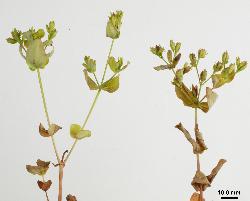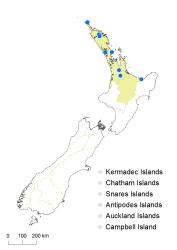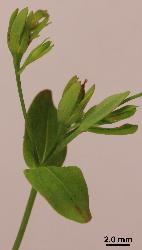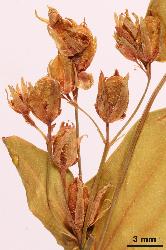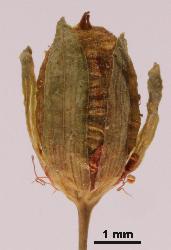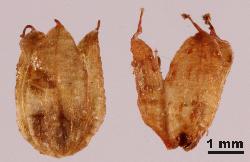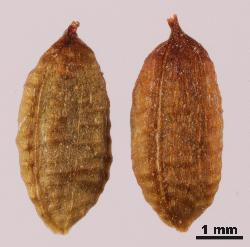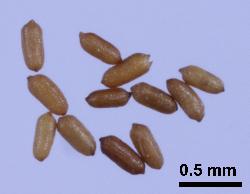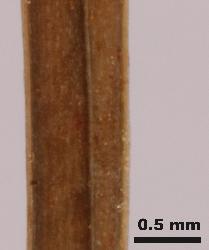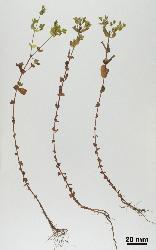Herbaceous annual or perennial, not rhizomatous, up to 0.55 m high. Stems erect, usually solitary, decumbent at base, up to 2.2 mm diam., quadrangular, 4-lined, black glands absent. Leaves 7.0-33.0 mm long, 3.0-13.0 mm wide, ovate, oblong, elliptic, ovate-oblong or ovate-elliptic, glabrous, reticulate tertiary veins absent; pellucid glands conspicuous; black glands absent; apex acute, subacute or obtuse; margin entire; base subcordate, truncate or obtuse; sessile. Inflorescence terminal, dichasial cymes, flowers few to many (greater than 50), corolla 3.0-4.0 mm diam. Pedicels 0.2-2.0 mm long. Bracteoles 1.0-2.0 mm long, 0.3-0.4 mm wide, subulate, apex acute. Sepals 5, 1.2-3.5 mm long, 0.3-1.0 mm wide, unequal, accrescent, lanceolate, oblong, elliptic-oblong, linear-lanceolate or linear-elliptic; pellucid glands present; black glands absent; apex acute or subacute; margin entire. Petals 1.8-2.5 mm long, 0.5-1.2 mm wide, longer than sepals, elliptic or elliptic-oblong, pale yellow, black glands absent, persistent after anthesis. Stamens not in bundles 6-16, 1.6-3.0 mm long, shorter than petals; anthers c. 0.2 mm long, anther gland absent. Ovary 1.5-1.8 mm long, 0.5-1.0 mm wide, oblong-ellipsoid. Styles 3, 0.3-0.5 mm long, longer than ovary. Fruit capsule, 3.5-4.7 mm long, 1.6-2.5 mm wide, oblong-ellipsoid, yellow-brown, seed outline protruding through wall. Seeds 0.4-0.6 mm long, c. 0.2 mm wide, oblong, terete, light yellow-brown, ribs absent, apices obtuse or rounded.
Distinguished by its usually solitary, 4-angled stems, the stem base being decumbent and rooting, absence of black glands, the petals being shorter than the sepals, 3 styles, and the mature capsules being thin-walled, oblong-ellipsoid and having the seed outline visible.
North Island: Northland, Auckland, Volcanic Plateau.
Mainly occurs in wet habitats such as roadside ditches, swamps, marshes, and wetlands, where it is often interspersed amongst other vegetation.
| Category | Number |
|---|---|
| Exotic: Fully Naturalised | 1 |
| Total | 1 |
Healy (1972, p. 189). Voucher: CHR 17443, 1967.
Flowering: Dec.–Feb.



